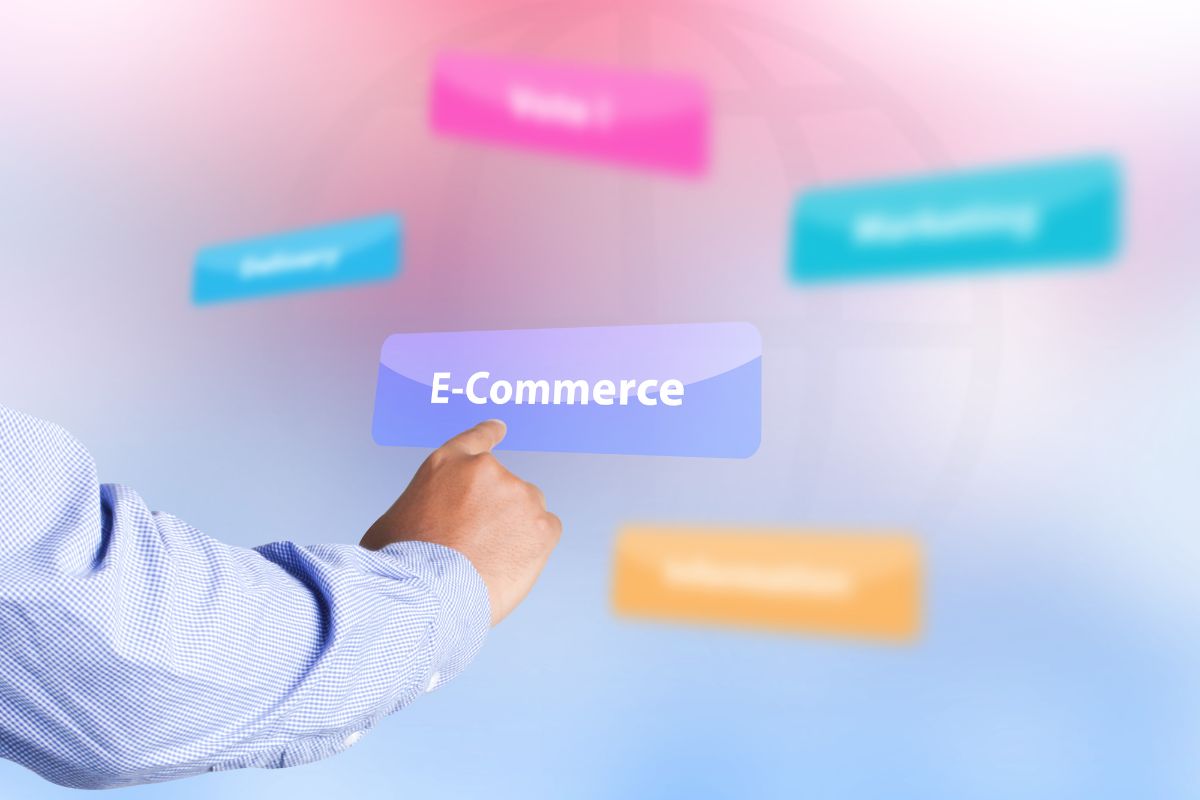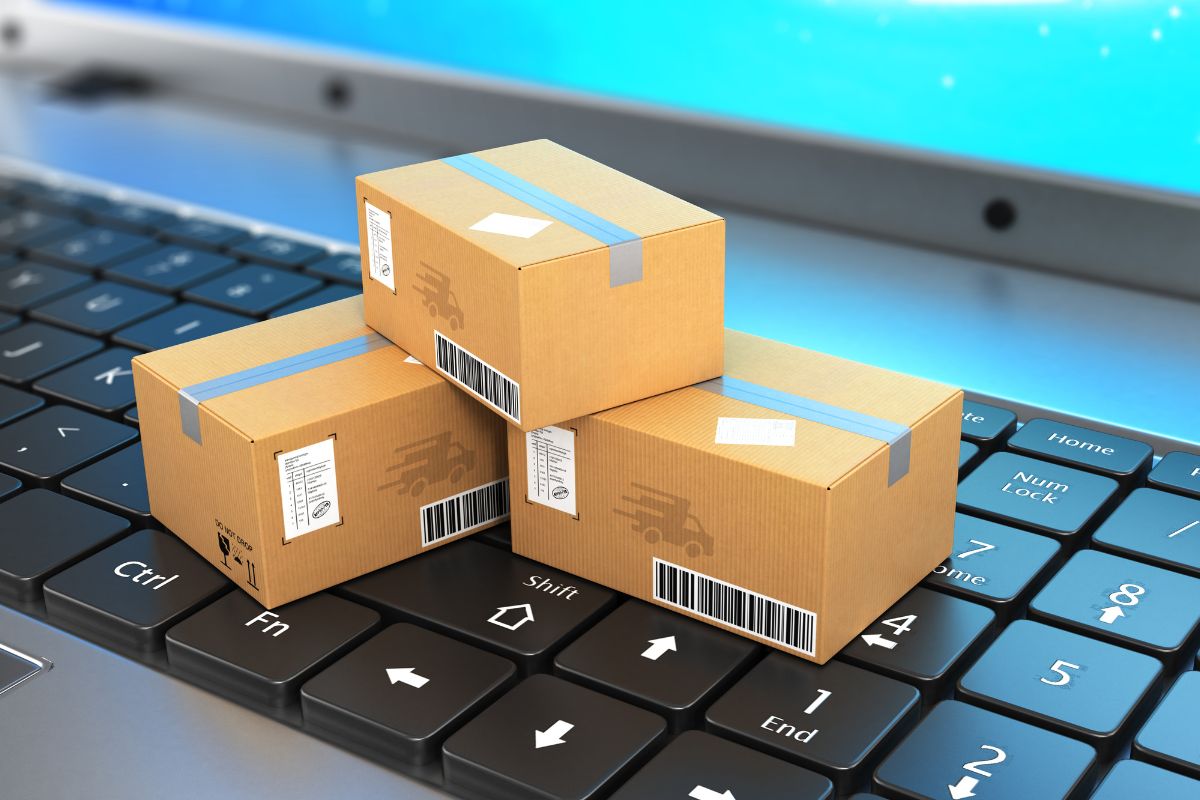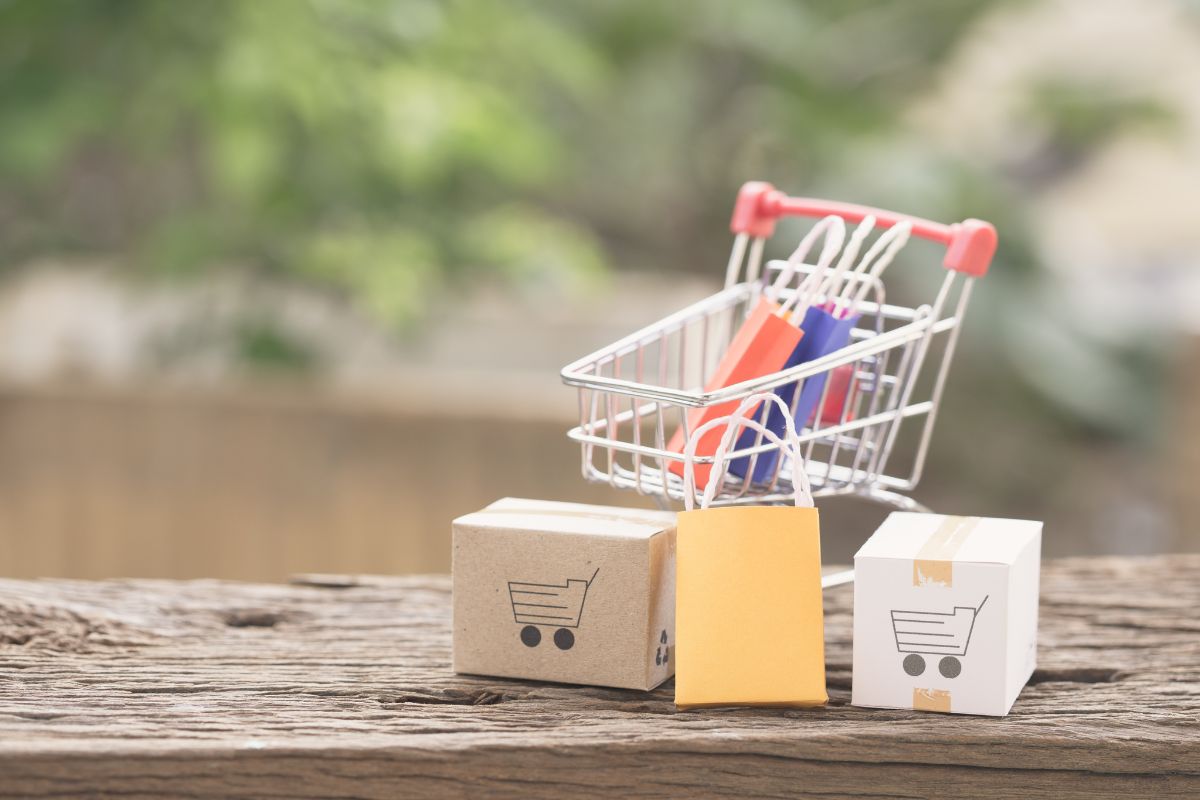What Is E-Commerce? A Simple Guide to Online Buying and Selling

E-commerce, or electronic trade, is when people buy and sell things on the internet. That is, it’s shopping and doing business online that are driven by computers and the internet. E-commerce comes in a lot of different forms, such as B2B platforms, social shopping, store websites, and mobile apps. It is expected that global retail e-commerce sales will go over $8 trillion by 2025. This shows how important online outlets have become for companies of all kinds.
E-commerce Business Models
There are four main types of e-commerce transactions:
- Business-to-Business (B2B): Businesses sell things or services to other businesses. For example, a maker might sell parts to a store. Businesses buy and sell goods, services, and information with each other through business-to-business (B2B) trade.
- Business-to-Consumer (B2C): This is when a business sells directly to a consumer. For example, an online store selling shoes to shoppers. When a business sells goods or services directly to end users, this is called B2C. This is the most common way for online stores to work. Think of Amazon, Walmart, or any other online store.
- Consumer-to-Consumer (C2C): In this type of business, one person sells goods or services to another person, usually through a third-party site. One example is selling used things on sites like eBay, Craigslist, or internet markets. Some examples of C2C platforms are Facebook Marketplace and Etsy. These platforms link buyers and sellers.
- Consumer-to-Business (C2B) means that regular people sell goods or services to companies. Like a photographer selling stock shots to a company or a celebrity selling their skills to help a brand get more customers. In a C2B strategy, a customer (seller) gives something of value to a business, which then buys it. It’s pretty much the opposite of a normal store company.
Each model is made for a different group of people and type of deal. B2B, B2C, C2C, and C2B are the main types. Direct-to-consumer (DTC) and business-to-government (B2G) are two new models that are on the rise.
Benefits of E-commerce
E-commerce is good for both users and companies in many ways. Some important keys are:
Lower Costs and Overhead (for Businesses)
It can be much cheaper to run an online store than a physical store. They don’t have to pay for rent, bills, staff, or security; all they have to pay for is web hosting and platform fees. It’s now easier for small businesses and new companies to open stores.
Wider Market Reach
Online shops can serve people from all over the world. A shop can only reach people in the same area, but a website or app can reach anyone with internet access. Companies “can reach potential customers all over the world” when they sell things online.
With e-commerce, even small businesses can grow into new areas, niches, or groups of people. For example, a neighbourhood bakery could use its website to sell goods all over the country. One guide says that e-commerce “makes it easy for new groups of customers to do business with you” and that it helps you reach more people.
Scalability
It’s easy to add more users to an e-commerce site. As sales rise, a store doesn’t have to move to a bigger space. Instead, it can improve its storage or add more items online. Websites and apps are better at handling more visitors than real estate. Businesses can grow faster without having to make big changes to their systems because of this.
Convenience and 24/7 Availability (for Consumers)

They can look and buy at any time, from anywhere. When compared to regular stores, which have set hours, online shops are open all the time. Customers don’t have to drive or wait in lines to shop; they can do it from home, at work or on the go. Online shopping is very common because you can do it from anywhere.
Ease of Comparison and Variety (for Consumers)
Consumers can easily compare prices and choose from a wide range of goods when they shop online. A customer doesn’t have to leave their house to check costs and reviews on different websites. Because they don’t have to worry about shelf room, e-commerce sites can have a lot more products than shops. Shoppers can make smart decisions with the help of detailed product details, high-resolution pictures, and customer reviews.
Faster Transactions (for Businesses and Consumers)
digital payments and self-service checkout make sales go faster. When people pay online, like with a credit card or PayPal, businesses get paid right away instead of having to wait for checks to be returned. People like how quickly they can buy things with just one click and get their computer records.
Overall, e-commerce can make it faster to handle orders and find out where they are. These advantages help companies make more money and work more efficiently, while customers enjoy more options, lower prices, and ease of use.
Read Also: Aphasia vs Dysphasia
Challenges of E-commerce
Even though e-commerce has benefits, it also has problems. Some common problems are:
Security and Privacy Concerns
Stores online deal with private customer data like personal and payment details. This makes hacking, data breaches, and scams more likely. A lot of people are afraid to give out their credit card or personal information online.
To keep customers trusting them, e-commerce companies need to spend money on good protection, encryption, and compliance (for example, PCI requirements). One security breach can hurt a company’s image and cost them millions of dollars.
Logistics and Delivery Issues

Shipping and handling online sales must be reliable in order to be filled. People often get angry when their gifts are late, lost, or destroyed during shipping. People who can’t pick up their things in person might have to wait days for delivery. Shipping that is too slow or too expensive can make e-commerce less useful if transport networks don’t work well and tracking isn’t clear.
Lack of Physical Experience
When people shop online, they can’t touch, try on, or test goods before they buy them like they can in a store. This is a big problem for things like clothes and furniture where how they look, feel, or fit is important. Some people are hesitant to buy something they haven’t seen in person.
To make up for it, e-commerce companies need to offer thorough pictures and movies, as well as simple return policies. Research shows that it’s a big loss to not be able to “look your customer in the eye” and provide good service.
Intense Competition
A lot of people are trying to get into e-commerce because there aren’t many hurdles to entry. There are dozens or even hundreds of companies in many fields that are all trying to get the same people. It’s hard to stand out when there are so many online shops.
Brands that are well-known control search and ads, so small businesses often have to fight on price or their ability to fill a niche. There is “a lot of competition,” which means that companies need to improve their marketing and customer service to keep customers coming back.
Operational Complexity and Costs
It takes work and technology to run an online store. Managing stocking systems, building and keeping a website, taking care of returns, and offering online customer service all make things more difficult. Even though e-commerce has lower rent, it still has costs like web hosting, platform fees, digital marketing, and teaching staff that can add up.
Large businesses may need new skills, like web creation, SEO, and data, that small businesses don’t have as much of. It can also be hard to combine online and offline activities (omnichannel platforms).
In short, e-commerce creates new chances, but it also comes with new problems that need to be solved. To do this, companies need to spend money on things like security, transportation, customer service, and integrating new technologies.
Enabling Technologies
E-commerce today is made possible by a group of digital technologies:
Online Payment Systems
Digital wallets and safe payment methods are important for online shopping. People can pay for things with credit cards, bank transfers, or saved account funds through services like Apple Pay, Google Pay, PayPal, and Stripe. There are also new choices on many sites, such as Buy-Now-Pay-Later.
When you check out, the website protects your information and uses these platforms to handle your payment. (In fact, some companies can now even handle payments made with cryptocurrency.) Online shopping would not be possible without these payment tools.
Mobile Commerce (m-commerce)
E-commerce is based on smartphones and computers, which are also used for mobile commerce (m-commerce). Mobile apps and websites that are responsive let you shop while you’re on the go. When you buy something on your phone, that’s called “mobile commerce.”
In real life, this means that shops and apps for iOS and Android need to be mobile-friendly. Industry data shows that more than 70% of online sales are now made on mobile devices. So, technology that lets businesses use Android and iOS apps and mobile web checkout (with one-click pay, fingerprint login, etc.) is very important.
Web and Cloud Platforms
To make shops, e-commerce businesses use cloud-based computers, content management systems (CMS), and shopping cart platforms. You can get ready-made infrastructure from services like Shopify, Magento, WooCommerce, or BigCommerce.
These systems take care of hosting, managing orders, making product catalogues, and keeping track of supplies. Cloud computing makes sure that websites can grow (by automatically increasing speed when traffic goes up) and get back to normal quickly. Secure SSL/TLS certificates and CDN networks are also used to keep data safe and speed up site loading around the world.
Digital Marketing Tools
You need technology to find and keep people online. Businesses that sell things online use SEO (search engine optimization) to get better rankings in Google searches. They also use email marketing (automatic messages and cart reminders), social media advertising (focused ads on Facebook, Instagram, TikTok, etc.), and analytics tools (like Google Analytics) to keep track of how users behave.
To send appropriate offers, personalised marketing tools look at information about each customer. Software like CRM systems, marketing automation, and ad networks target the right people at the right time, which is what makes getting new customers and keeping old ones possible.
All of these technologies work together to make e-commerce possible, including an easy-to-use shopfront, safe checkout, dependable shipping, and marketing and management tools for businesses.
New Trends in Online Shopping
E-commerce is still changing very quickly. Important trends that will affect its growth are:

AI and Personalization
E-commerce is changing because of artificial intelligence (AI) and machine learning. For instance, robots and virtual helpers that are driven by AI offer fast customer service on websites and message apps.
Machine learning systems look at information about shoppers to make personalised product suggestions and real-time price changes. Experts say that this level of customization, which they call “seamless, personalised shopping experiences,” makes customers more interested and increases sales.
Inventory and transport are improved in the building by AI-driven robots and demand forecasts. In general, adding AI to online shopping makes it better and faster.
Mobile & Social Commerce
More and more people are using their phones to shop. Facebook Shops and Instagram Checkout are two examples of in-app shopping features that are being added to social media sites so that users can look and pay without leaving the app.
Voice shopping is also growing, which means that people can buy things using voice aides like Google Assistant or Alexa. Because of these trends, customers can now actually shop with their fingers, or mouth. This makes purchases faster and more a part of daily life.
Cross-Border Commerce
Selling things across countries is becoming more and more popular. Businesses can expand to new countries with the help of better international shipping, sites in the local language, and global payment providers. One business guide says that companies that want to reach more people should start selling in more than one country.
In real life, this means that internet shops usually accept more than one currency, offer shipping choices specific to each area, and follow local rules. For digital items and world companies, cross-border e-commerce is very important.
Augmented Reality (AR) and Immersive Tech
New technologies like AR and VR are making the online experience better. Before they buy something, customers can “try on” clothes online, see how furniture fits in their home, or look at goods in 3D. These tools help connect shopping online and shopping in stores.
Read More: Small Business
End Note
In future, e-commerce is likely to become even more a part of everyday life. Personalization powered by AI, easy mobile shopping, and selling goods all over the world are going to change the way we buy things in the next few years. In the ever-changing online market, businesses that follow these trends will stay competitive. They just need to make sure they have good customer service and security.






